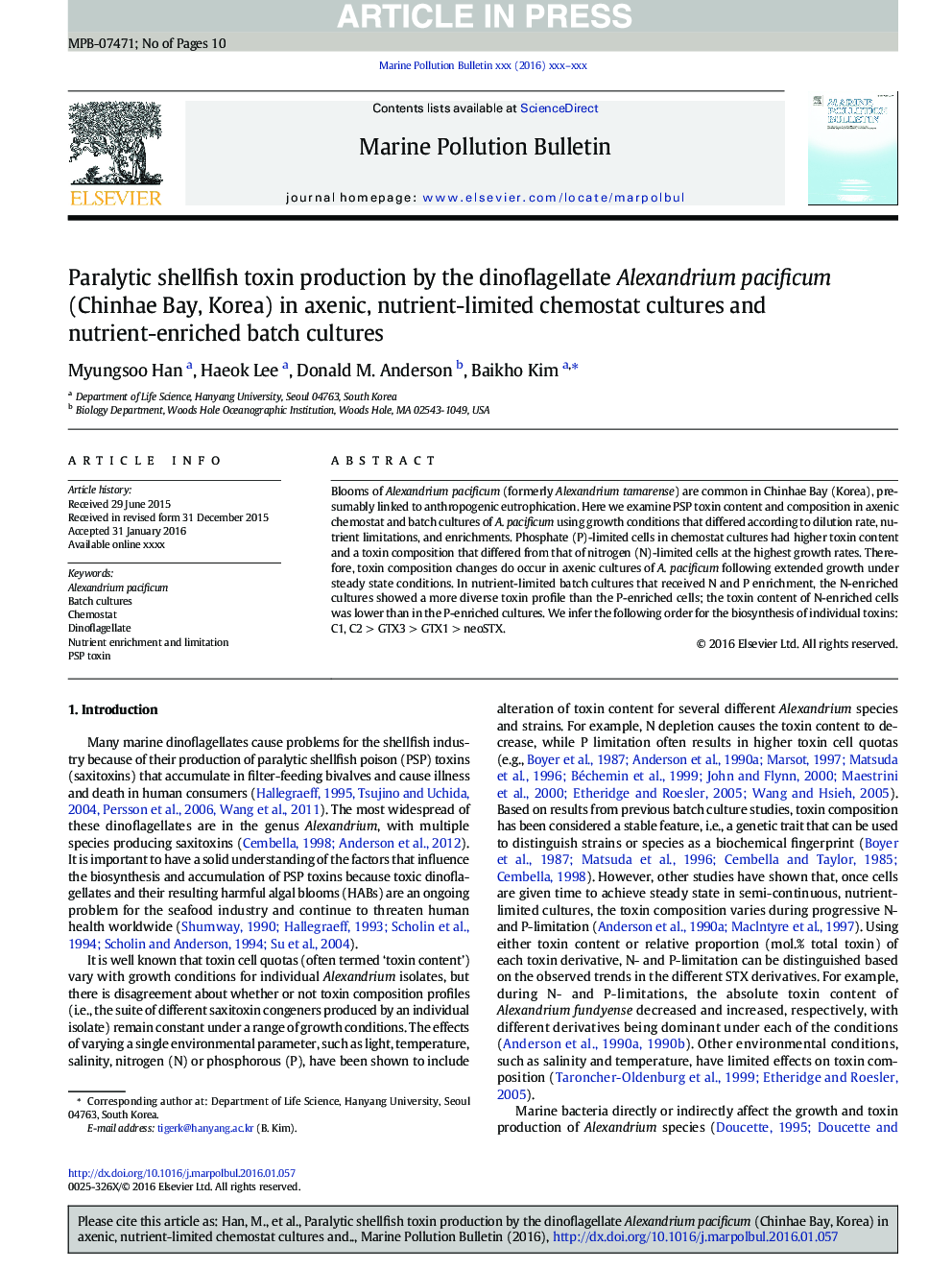| Article ID | Journal | Published Year | Pages | File Type |
|---|---|---|---|---|
| 6355814 | Marine Pollution Bulletin | 2016 | 10 Pages |
Abstract
Blooms of Alexandrium pacificum (formerly Alexandrium tamarense) are common in Chinhae Bay (Korea), presumably linked to anthropogenic eutrophication. Here we examine PSP toxin content and composition in axenic chemostat and batch cultures of A. pacificum using growth conditions that differed according to dilution rate, nutrient limitations, and enrichments. Phosphate (P)-limited cells in chemostat cultures had higher toxin content and a toxin composition that differed from that of nitrogen (N)-limited cells at the highest growth rates. Therefore, toxin composition changes do occur in axenic cultures of A. pacificum following extended growth under steady state conditions. In nutrient-limited batch cultures that received N and P enrichment, the N-enriched cultures showed a more diverse toxin profile than the P-enriched cells; the toxin content of N-enriched cells was lower than in the P-enriched cultures. We infer the following order for the biosynthesis of individual toxins: C1, C2Â >Â GTX3Â >Â GTX1Â >Â neoSTX.
Related Topics
Physical Sciences and Engineering
Earth and Planetary Sciences
Oceanography
Authors
Myungsoo Han, Haeok Lee, Donald M. Anderson, Baikho Kim,
